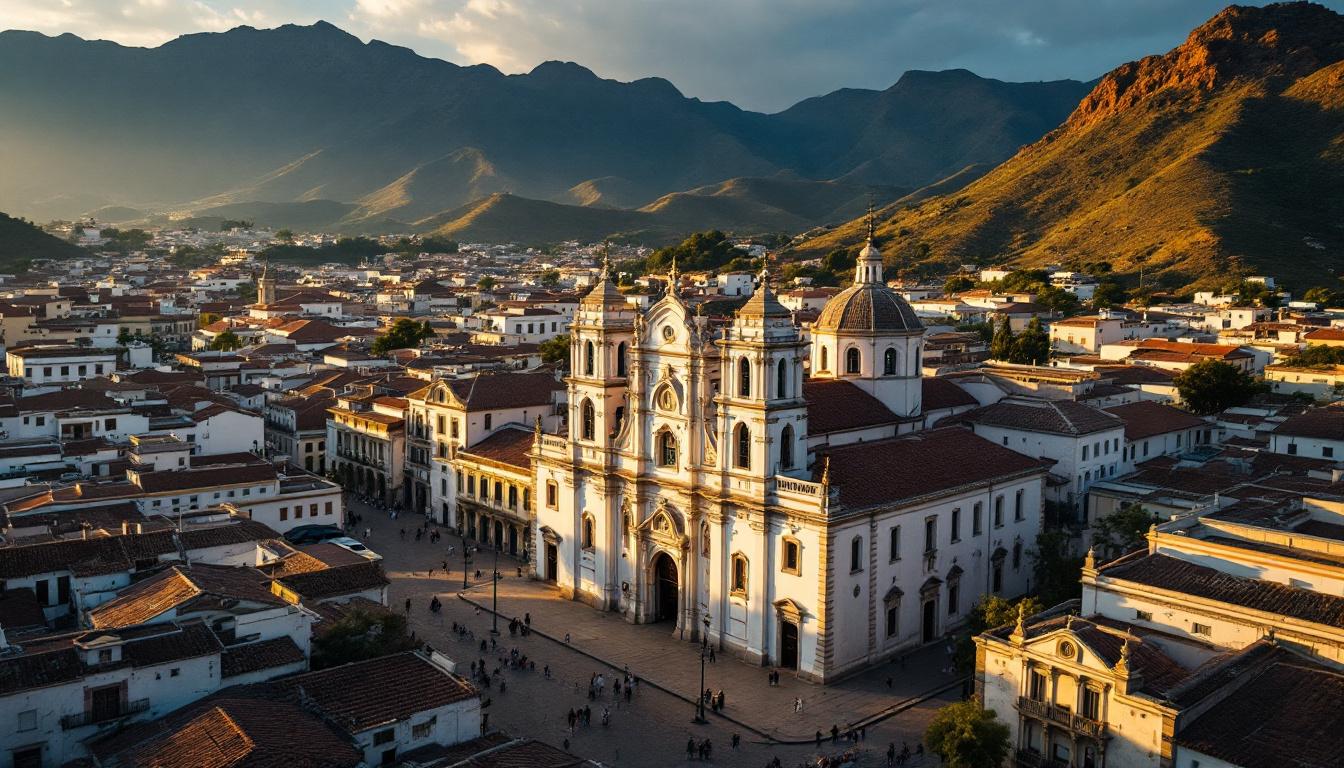White-washed colonial architecture gleams under the Andean sun in Sucre, Bolivia’s constitutional capital that feels frozen in time. Unlike its bustling administrative counterpart La Paz, this UNESCO World Heritage city offers travelers a mesmerizing blend of 16th-century Spanish grandeur and indigenous Bolivian soul at a relaxed pace that invites exploration.
The White City: A living colonial masterpiece
Nicknamed “La Ciudad Blanca” (The White City), Sucre’s historic center spans 114 hectares of pristine colonial buildings with characteristic white facades and terracotta-red tiled roofs. The preservation is so remarkable that walking these cobblestone streets feels like stepping directly into the 1700s.
“Our architecture represents the perfect marriage between European design and local craftsmanship,” explains María Velasco, a local historian. “Each building tells a story of Bolivia’s complex past.”
A historical treasure trove beyond the typical South American circuit
While some destinations restrict visitor numbers to preserve their heritage, Sucre remains wonderfully accessible. The crown jewel is Casa de la Libertad, where Bolivia’s declaration of independence was signed in 1825. Inside this former Jesuit chapel, the original declaration document and portrait gallery of revolutionary heroes offer profound insights into South American liberation.
Architecture that spans four centuries
Sucre’s buildings showcase an evolutionary timeline of European architectural styles. The Metropolitan Cathedral, begun in 1559, features Renaissance, Gothic, Baroque, and Neoclassical elements added across 250 years of construction. Convento de San Felipe Neri offers visitors rooftop access with panoramic views of the cityscape that photographers dream about.
Indigenous markets: A feast for the senses
Beyond colonial splendor, Sucre’s vibrant markets showcase Bolivia’s indigenous heritage. At Mercado Central, local women in traditional pollera skirts and bowler hats sell everything from handwoven textiles to exotic fruits from the Amazon basin.
For an exceptional cultural experience, time your visit for Sunday at nearby Tarabuco Market, where Yampara people gather in traditional dress that has remained largely unchanged for centuries.
The unexpected luxury of affordability
Unlike exclusive island getaways, Sucre delivers five-star experiences at backpacker prices. Boutique hotels in restored colonial mansions often start below $50, while gourmet meals featuring local specialties like chorizo chuquisaqueño rarely exceed $15.
“Travelers are consistently amazed by how far their money stretches here while enjoying world-class heritage experiences,” notes Carlos Mendoza, a local tour guide.
Beyond the city: Dinosaur footprints and crater hikes
Just minutes from downtown lies Cal Orcko, home to the world’s largest collection of dinosaur footprints. Over 5,000 tracks from 15 dinosaur species are preserved on a massive limestone wall, creating what locals call a “dinosaur dance floor.”
Day-trippers can also explore the stunning Maragua Crater, a natural geological formation where indigenous communities maintain pre-Columbian lifestyles much as ancient markets continue alongside modern developments elsewhere.
Surprisingly mild climate year-round
Unlike Nordic destinations with extreme temperature swings, Sucre enjoys eternal spring weather. At 9,200 feet elevation, days hover between 65-70°F year-round with cool, clear nights – perfect for exploring without oppressive heat or freezing conditions.
Architectural splendor beyond expectations
The Castillo de La Glorieta stands as Bolivia’s most unexpected architectural oddity. This pink-and-white fairy-tale castle combines Gothic, Renaissance, and Byzantine styles into what locals call “the Bolivian Neuschwanstein.” Like certain architectural wonders outside Paris, it represents a fascinating cultural anomaly.
Sucre delivers a perfect balance of authentic South American culture, colonial elegance, and modern comforts without the crowds of Cusco or the intensity of La Paz. Here, travelers find Bolivia’s soul – preserved in white limestone and red clay, waiting to be discovered one cobblestone street at a time.
